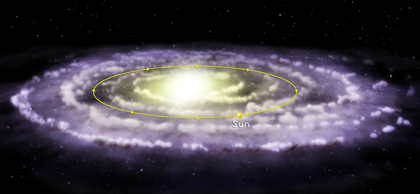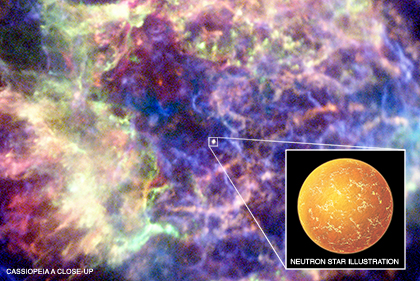Q&A of the Day: Hey, Did you Catch How Fast that Solar System is Going?
Q:
Is our solar system moving or traveling within our Galaxy? Is our Galaxy traveling or moving in the Universe? If so, how fast?
Thanksgiving Prep: Preheat at 90 for 15 minutes
John Scott is a mission planner for Chandra's Flight Operation Team, and from time to time provides an inside look for the outside world on just how people take care of this remarkable spacecraft. This entry has a bit of a mystery in the second half of the title. If you have a guess to what it means to "Preheat at 90 for 15 minutes," then post it to the comment section. (Note to the rest of the Flight Ops Team: you're not eligible!) If someone comes up with the right answer - or close to it - we'll send you a Chandra poster.
As most of the nation will spend the Thanksgiving holiday devouring a stuffed turkey in the warmth of their dining room, the Chandra X-ray Observatory will give thanks for the three batteries that will keep it powered during the first day of its 22nd eclipse season. With only three and a half weeks of eclipses (eight eclipses total), this season will be brief when compared to the upcoming eclipse seasons in the following few years.
Chandra Hosts a Carnival Of Space
This week, the United States marks the Thanksgiving holiday. For most of us, this means lots of time with family (sometimes too much), friends, and vast amounts of food. It also causes all productivity to cease anywhere close to Thursday and the days that follow. That said, however, science and space never sleep - not even from an overdose of tryptophan.
Q&A of the Day
We've decided to introduce a new, intermittent series to the Chandra blog. From time to time, we'll dig into our vast archive of questions submitted by the public and post the answers written by experts at the Chandra X-ray Center. Some of these will be Chandra-specific or at least X-ray astronomy related. Others, well, they'll be somewhat random. Enjoy.
NASA's Great Observatories Examine the Galactic Center Region
In celebration of the International Year of Astronomy 2009, NASA's Great Observatories -- the Hubble Space Telescope, the Spitzer Space Telescope, and the Chandra X-ray Observatory -- have collaborated to produce an unprecedented image of the central region of our Milky Way galaxy.
Meet an Astronomer: Leisa Townsley
Leisa Townsley has long been a favorite of the Chandra team. Not only does she do really interesting science, she creates some truly spectacular images that we get to share with the public. Leisa is a Senior Scientist at Penn State University. Keep your eyes open for some more gorgeous Chandra images from Leisa and her colleagues, as well as new science results, in the not-so-distant future.
Carbon Atmosphere Discovered On Neutron Star
This Chandra X-ray Observatory image shows the central region of the supernova remnant Cassiopeia A (Cas A, for short) the remains of a massive star that exploded in our galaxy. Evidence for a thin carbon atmosphere on a neutron star at the center of Cas A has been found. Besides resolving a ten-year-old mystery about the nature of this object, this result provides a vivid demonstration of the extreme nature of neutron stars. An artist's impression of the carbon-cloaked neutron star is also shown.
Chandra Source Catalog: Onto the Google Sky (Part 2)
As the Chandra Source Catalog was being finalized for release (documents updated, final verifications being performed, etc.) we had some time to try a little experiment:
As part of the Catalog, we produce so-called "3-color" JPEG images: red representing low energy, green = medium energy, and blue = high energy. We thought it would be interesting to learn enough of the Keyhole Markup Language (kml) to enable these images to be viewed with Google Earth in its Sky mode.





